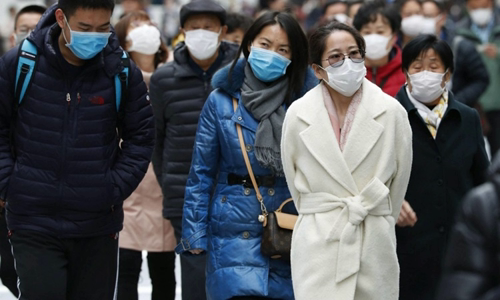The Japanese government has been criticized for only testing nCoV for more than 32,000 people, only about one-tenth of South Korea.
Figures released by the Japanese government show that only 32,125 people have been tested so far, while South Korea has tested nearly 300,000 people and more than 270,000 people tested negative for nCoV. This led the Japanese government to be criticized for its lack of initial testing capacity and concern that its officials "missed" people with mild symptoms.

Japanese people wear masks to prevent epidemics on the streets of Tokyo in February Photo: Kyodo News
Japan's Ministry of Health today announced 47 new cases of nCoV, bringing the number of cases to 868, of which 29 died. Some experts say Japan's relatively high mortality rate, around 3.3%, is evidence that many infections have yet to be discovered.
However, Japanese officials say the low rate of testing for nCoV is not a reason for the recent rise in new infections in the country. According to officials, Japan has a large network of public health centers, allowing them to detect virus outbreaks in small towns on the northern island of Hokkaido.
"If there is an outbreak, we will be reported by the health center. So far, we have not recorded it," said Takuma Kato, a senior official at Japan's Ministry of Health. .
Hitoshi Oshitani, a member of the Japanese government's expert advisory board, acknowledged that the lack of initial testing left some "transmission chains" undetected, but authorities have worked hard to identify clusters of infections. . Japan says it can test more than 6,000 people per day and can increase to 8,000 people per day by the end of the month in case of a major pandemic.
Japan's Ministry of Health yesterday announced 13 epidemic groups nationwide, including four day-care centers for the elderly, two health facilities, two gyms, two live music venues, an exhibition, a boat for a party and a table tennis club. The biggest outbreak is the live music club in Osaka with more than 50 cases.
Mr. Oshitani said that although nCoV is difficult to control, it also has some weaknesses. According to him, 80% of the patients do not transmit the virus to anyone else, while 10-15% of the patients spread the virus only to one person.
"However, in some cases, one patient can infect many people. This is what we call the epidemic cluster. Without the epidemic cluster, most disease transmissions will end without intervene, "Oshitani said, adding that it is important to prevent new outbreaks from appearing.



 BonnieCrossman
BonnieCrossman







